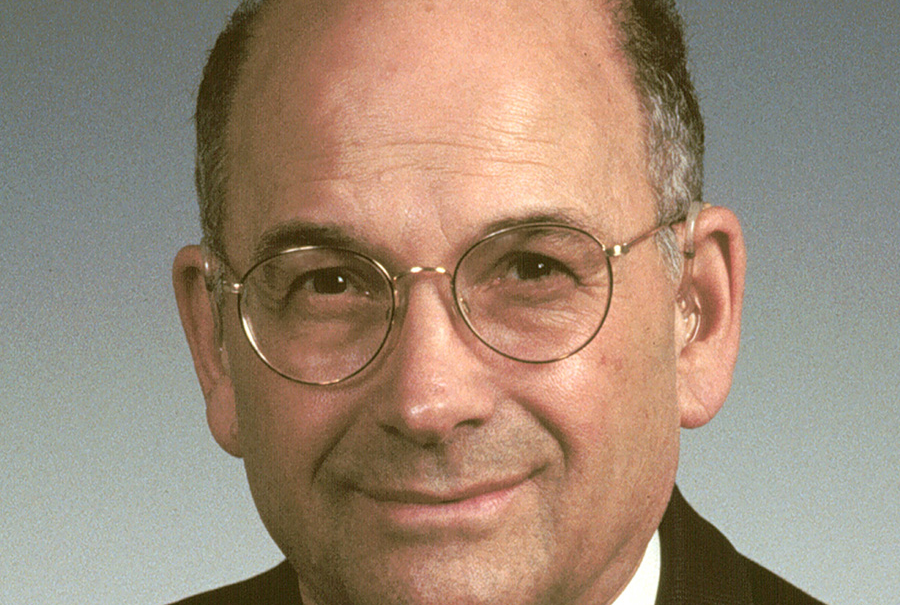Even at NewYork-Presbyterian Hospital, where the world's finest physicians practice, Dr. Peter Wilson stands out. A professor of clinical psychiatry at Weill Cornell Medical College and attending psychiatrist at the Payne Whitney Clinic of NewYork-Presbyterian/Weill Cornell, Dr. Wilson has spent his entire 50-year career at the Hospital.
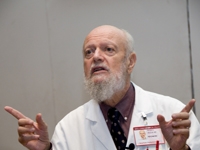
Dr. Peter Wilson presented an oral history of the Payne Whitney Clinic, Sept. 10.
When it was decided that, in honor of the Payne Whitney Clinic's 75th anniversary, an oral history would be compiled, Dr. Wilson was the obvious choice to catalog the Clinic's storied past. He has amassed more than 70 hours of audio tape and more than 58 individual video interviews with the physicians, administrators and board members who have built Payne Whitney into one of the finest psychiatric institutes in the world.
And despite the fact that he has some 40 more people scheduled to interview, Dr. Wilson shared a distilled overview of the Clinic's creation and growth over the last 75 years during a recent Psychiatry Grand Rounds session on Sept. 10 at Uris Auditorium.
"The Payne Whitney Clinic was born out of passion, generosity and a marriage," Dr. Wilson said to an assembled audience that included both current psychiatry chairman Dr. Jack Barchas and his predecessor, Dr. Robert Michels, the Walsh McDermott University Professor of Medicine and university professor of psychiatry at Weill Cornell.
The passion belonged to Dr. William Russell, the medical director of the Bloomingdale Hospital — now NewYork-Presbyterian Hospital/Westchester Division — who longed to create a psychiatric institute that could stand on its own.
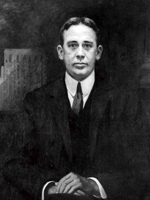
William Payne Whitney
The generosity came from William Payne Whitney, who, thanks to a sizeable inheritance from his uncle, set aside $10 million in his will to be spent on psychiatry and neurology.
"We're not sure why he gave this money for mental health, but, nevertheless, we are grateful he did," Dr. Wilson said.
The final component was the marriage in 1927 of New York Hospital and what was then called Cornell University Medical College.
From the outset, Dr. Russell and Dr. George Canby Robinson, director of The New York Hospital–Cornell Medical Center, were at odds over the leadership of the Clinic. Dr. Russell had full authority in Westchester and envisioned a similar role for himself at Payne Whitney. Ultimately, he wanted what Dr. Adolf Meyer had at the Henry Phipps Psychiatric Clinic at Johns Hopkins, a strong, independent, academic institute that maintained an affiliation with a major metropolitan hospital.
But Dr. Robinson felt Dr. Russell lacked the academic credentials to chair the psychiatry department.
On a larger scale, what Dr. Russell was fighting for was the legitimacy of his field and the rights of its patients. Neither the board of the Hospital nor the Medical College was greatly concerned with psychiatry at this time, instead concentrating on establishing the curriculum of departments they deemed to be more critical, such as medicine and surgery.
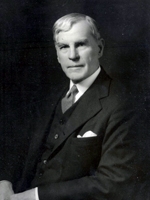
Dr. William Russell
This was the morass Dr. George Amsden entered as the inaugural chair of the psychiatry department. Without the support of Dr. Russell, Dr. Robinson or either board, Dr. Amsden didn't stand a chance and was gone within three years.
Despite the early leadership struggles, from a patient treatment standpoint the reputation of the Payne Whitney Clinic thrived. Being in New York naturally positioned the Clinic as the logical choice for celebrities seeking treatment, but the true reputation of Payne Whitney was one of comprehensive patient care for all comers.
The interior of the Clinic resembled an upper-middle-class private residence more than a hospital. And patients often stayed as long as two years.
In 1936, the Payne Whitney Clinic got its first taste of progressive leadership when Dr. Oskar Diethelm, a protégé of renowned psychiatrist Dr. Adolf Meyer, accepted an offer to become chair.
Under Dr. Diethelm, the Clinic continued to flourish. Dr. Diethelm himself proved to be a dynamo, meeting with every resident and every patient each week — as many as 100 patients and 15 residents at the Clinic at any given time.
But the psychiatry curriculum for medical students lagged behind.
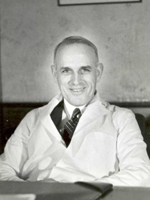
Dr. Oskar Diethelm
When Dr. Diethelm retired in 1962, education was not the primary focus of the incoming chair, Dr. William Lhamon, who had a passion for research. And while he focused his efforts on establishing a top-notch research institute at Payne Whitney, he left the teaching to four of his colleagues, one of whom was Dr. Wilson.
It wasn't until 1974, when Dr. Robert Michels took over as chair, that the educational component of the Payne Whitney Clinic was given the attention it deserved.
"He hit this place like a tsunami," Dr. Wilson said.
The number of residents increased from 26 to 45. The number of classes for residents and medical students was also raised, expanding the curriculum as a whole.
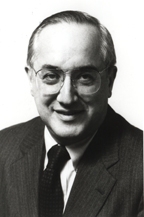
Dr. Robert Michels
"He knew what was going to be the next big thing is psychiatry, where we wanted to go," Dr. Wilson said.
In 1991, when Dr. Barchas succeeded Dr. Michels, who left the chair to become dean of the Medical College, he inherited a world-class psychiatric institute and a psychiatry department, which, in terms of education and patient treatment, was second to none.
Under the leadership of Dr. Barchas, a world-renowned researcher, cutting-edge research has flourished at the Payne Whitney Clinic, adding to its reputation as an institution of excellent patient care and education.
Images courtesy of Medical Center Archives of NewYork-Presbyterian/Weill Cornell.
Photo of Dr. Peter Wilson by Amelia Panico.

